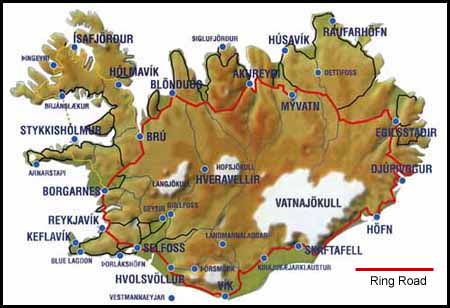
To industrialize or not to industrialize? In the 21st century, few nations have the freedom to make such a decision; some because they are so completely industrialized that the question has expired, others because they simply do not have the luxury of pursuing economic development discriminately. Of those countries that are still unindustrialized yet politically and economically healthy, none has the freedom and scope of choices to plot its commercial and environmental trajectory quite like Iceland. With a population of 310,000 and one of the world's strongest democracies, the future of Iceland is very much so in the hands of its people, but whether they choose to think first of man or nature, or if that distinction even matters in terms of policy decisions, is yet to be seen.
Iceland is on the cusp of major commercial development, and, unless prevented, the Icelandic Government and six or seven multinational aluminum corporations design to build a series of hydroelectric and geothermal plants across the country by the year 2020 to smelt aluminum. Different ecosystems and output levels mean different degrees of environmental impact for each plant, but they can be generally understood through the effects inherent to each means of energy production and to the process of aluminum smelting.
Geothermal energy draws power from heat within the earth, which is harnessed by steam-spun turbines that generate electricity. Though this is relatively clean way of making energy there are a number of environmental issues specific to this process. One primary concern is the wastewater used to spin the turbines, which is always either pumped back into the ground or into a nearby body of water. The former option runs the risk of exacerbating geological instability, and the latter can prove damaging to sensitive species. One study by Landvernd, has shown that a geothermal plant near Lake Thingvallavatn has actually killed all aquatic life in the area of the lake directly around where the wastewater is being pumped, and that this consequently caused a decline in goose, falcon, duck, and raven populations (De Guidice 3).
Hydroelectricity is even cleaner than geothermal energy, it produces no waste, and, some scientists argue, much less carbon dioxide than fossil fuels. The environmental consequence of creating a hydroelectric plant is clear to the naked eye: huge swaths of land must be flooded and the motile inhabitants displaced to create the dammed lake which, along with gravity, provides the power for energy production. In 2006 Alcoa built a hydroelectric plant in Iceland, damming a series of rivers and flooding 22 sq. km of wilderness. Pink-footed geese and reindeer were displaced, and the landscape was irreversibly changed. This complete destruction of natural ecosystems, no matter how much clean energy production it makes possible, seems to be at the heart of popular opposition to this kind of energy production. Furthermore, the vegetation submerged behind the dam's wall forms methane as it rots, which escapes as water rushes through the turbines (Krater 2). Methane is a greenhouse gas twenty-one times stronger than carbon dioxide.
Both geothermal and hydroelectric power plants have existed in Iceland for years, in fact over 80% of Iceland's energy comes is geothermically generated and 99% comes from renewable sources, but the scale of this new plan exceeds anything extant. Not only are the proposed plants individually larger, but they require peripheral infrastructure in order to be efficiently used to smelt aluminum profitably. The largest proposed hydroelectric site, Kárahnjúkar, would require, in addition to the dams, 45 miles of tunnels and 31 miles of high-tension power cords. Blasting the tunnels could cause unfavorable geological activity -- Iceland is located directly above the mid-Atlantic Ridge -- and the power lines could interfere with the ecosystems not directly destroyed by flooding. In addition to the inherent and coordinative hazards of energy production, smelting iron releases bauxite and aluminum oxide particulate as well as hydrogen fluoride gases, fluorides, alumina, carbon monoxide, sulfur dioxide and volatile organics.
Even the "cleanest" and most environmentally conscious modes of energy production feasible have environmental consequences. No matter what choice they make, the environment will suffer. Alcoa and Capital Aluminum will continue to smelt aluminum to meet demand, regardless of whether they are successful in their Iceland campaign or not. The choice is between concentrated or diffuse damage; either directly destroy Iceland or contribute to the global environmental crisis. Clearly, the decision to create and implement an energy-intensive plan for industrial development was not a simple one to arrive at, nor is it final, and to really understand what is at stake we have to look at the county's history, demography, and culture. While on the surface this is a conflict of interest between industry and the environment, at heart it is a dual question of what the environment means to Icelanders, a meaning that varies as much as the country's landscape, and what a naturally pristine Iceland means to the world.
Until 1940, Iceland was to Denmark what Ireland was the United Kingdom -- it had maintained home rule since the early 19th century but was economically restrained by unfair relations with its mother country. Amidst the chaos of World War II Iceland broke ties with the Danish King, and in 1943 dissolved the Act of Union, ending its formal relationship to Denmark. Due to its inaccessibility and subordinate, colonial history, "for the longest time, life here [Iceland] had meant little more than a sod hut, dark all winter, cold, no hope, children dying left and right, earthquakes, plagues, starvation, volcanoes erupting and destroying all vegetation and livestock, all spirit—a world revolving almost entirely around the welfare of one’s sheep and, later, on how good the cod catch was" (Del Guidice 2 ). Against this backdrop of physical and economic hardship, the Icelandic Government's decision to prioritize commercial development (and the wealth and comfort it generates) above absolute environmental protection seems completely justified.
But of course this is not the only perspective, nor is it definitively the most popular. Older Icelanders, more directly in touch with and affected by the social and economic conditions mentioned above, tend to be more commercially pragmatic and immediately self-interested than younger generations. The youth of Iceland are at the forefront of its environmental movement, and through an organization called "Saving Iceland" are trying to counter the pragmatic tendencies of the current government. This age delineation, along with the urban/rural dichotomy, are the most important social distinctions for framing the dispute in human terms.
Interestingly, it is the non-urban population, those who live near or around the wilderness areas in dispute that are on the side of the government and the foreign corporations. For while their love for Iceland is no smaller than the urban population's, they are the last to be included in Iceland's rather recent economic boom. During the last decade Iceland greatly expanded its software production, as well as the banking, tourism, and biotechnology sectors. These low-impact service industries have turned Reykjavik, the capital and home to over a third of the country's population, into a cosmopolitan European city, and helped the country attain the fifth highest nominal GDP in the world. But this matters little to those still scraping by on what the land provides them with. Iceland, while richer than almost anywhere else in natural beauty, has very few easily accessible natural resources. Outside of the geothermal potentials locked in the lava far beneath the ground which matter little to a subsistence farmer, the Icelanders living off the land are almost entirely dependent on sheep, since grass is one of the only things that will grow in the harsh climate, and most importantly, on fishing. The only way to break their dependence on a land that is less than generous is for another manner of making a living to come to them, and that is exactly what the government has in mind with its hydroelectric and geothermal designs. The average plant would employ 400 people, and since the tenth largest city in Iceland has only 5,000 people in it, that many jobs would be an almost inconceivably fortuitous windfall for any small village lucky enough to be close.
Maybe. It is worth noting that what this group of Icelander's perceives to be in their interest very well may not be, since historically the commercial development of rural Iceland has aversely affected the livelihood of the common man. In the 1930's, when more people than ever before or since were employed in the fishing industry, twenty-three percent of the country was working as a fisherman. Today, less than six percent are still fishing (Íslandsbanki, 2). Though this decline in small-scale fishing is a result of the capitalistic/darwinian "survival of the most efficient" rather than premeditated government action, it is still an undeniable example of large industry hurting local, rural populations. The connection with the current situation is not direct, since first the construction and later the smelting jobs will not be displacing a pre-existing correlate, but the lesson is germane nonetheless. When industrial fishing displaced small fisheries it increased the dependence that small village economies had on other scarce resources; and it is partially as a result of this shift that rural Icelanders are so hard off now. It is possible that without the influx of commercial fisheries, those villagers could have been able live economically and environmentally sustainable lives without undue deprivation -- and it is just as likely that this new round of development will yet again force new and unforeseen adaptations.
It is easy to see why rural and older Icelanders favor a pragmatic policy of economic development, but the opposing faction, those who claim to be "Saving Iceland", have a much less transparent motivation. While it is impossible to know exactly why urban populations generally, and students specifically, are so fervently protecting Iceland's environment, the nature of their interaction and the cultural context in which the debate is framed does provide a number of clues. Iceland has a very poor road system in the interior of the country, and until recently when transportation became sufficiently better and cheaper to facilitate easy access for the average urban Icelander, few had actually seen what many are now so anxious to save. Ring Road (pictured below), the popular name for Route 1, was completed in 1974 and is the largest road in Iceland. Though this can only be conjecture, I would argue that the youth environmental movement in Iceland is very similar to the environmentalism found on American college campuses: it is not one that springs from close connection to the soil, but rather it is an expression of measured academic concern and youthful idealism that is inherently oriented against commercialization.

Ring Road (Route 1) courtesy of home.earthlink.net/~studio1photo/iceland.htm
Regardless of whether my amateur analysis accurately captures the cursorily perspective of young Icelanders, environmentalists the world over are reacting to similar situations with those same sentiments I posited for Iceland: rational concern for human interests, compassionate concern for the rest of nature, and a pseudo-mystical concern for a world that seems to somehow transcend the mundanity of civilization. The first and most easily defensible argument, self-interest, is what frames the debate over global warming. Essentially, are we going to kill ourselves by destroying the resources upon which we depend. The second concern is for the sanctity of all life, and this decidedly un-anthropocentric attitude is advocated on the grounds that, regardless of what the effect on ourselves, we have a moral responsibility to treat all life with respect. Both of these perspectives, I must assume, are very well understood, even if only intuitively, by anyone familiar with environmental issues. What makes Iceland so significant in my mind is the final concern, the mystification of nature, which here manifests itself both literally and symbolically. Iceland has a rich cultural heritage that puts great emphasis on how the hinterlands are populated with spirits, elves, and all kinds of other supernatural creatures (De Guidice 4). This may seem silly in the context of the larger argument, but nonetheless it is a very real cultural tradition that is no less absurd than, say, our own belief in the invisible hand of the market.
This juxtaposition, between fairies and fourth-quarter earnings, brings us back full circle to where this discussion began: industry or environment, pragmatism or mysticism. But Iceland is not only a mystical place insofar as some people believe in the supernatural, but I contend, it is a symbolically mystical place for the Western world to escape its anthropocentric ideologies of progress. In a world dominated by neo-liberal economics and postmodernism, the sheer magnificence of Iceland's natural beauty and the possibility of its imminent modernization and commercialization is one of the most visible and moving reminders that maybe there is something greater than human progress, something that can't be quantified, that can't be rationally or even morally evaluated. The people of Iceland will have to decide whether to interpret their interests as being best served commercially, or alternatively, will have to acknowledge the importance of preserving their rare window into a mystical world, devoid of all the ephemeral orders and things that define our age.
The power of a photograph cannot compare to the visceral power of actual immersion, but these (courtesy of SavingIceland.org) may be helpful for clarifying exactly what is at stake. All photographs are of areas threatened by the current energy/aluminum initiative:
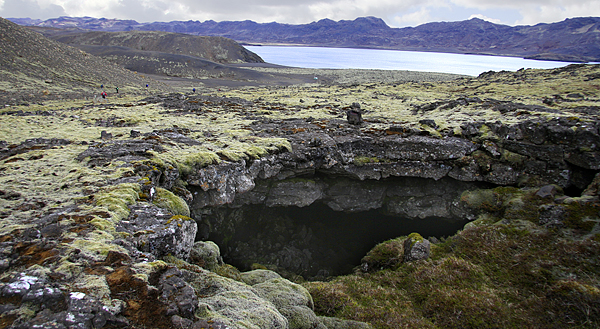
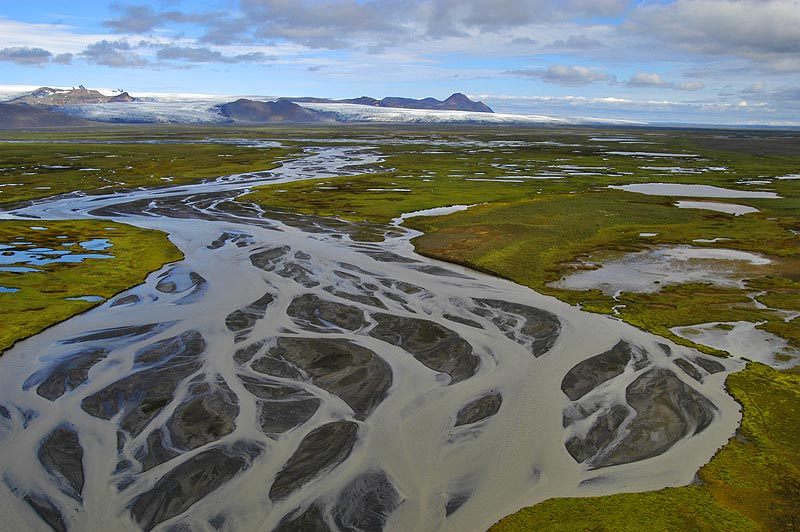
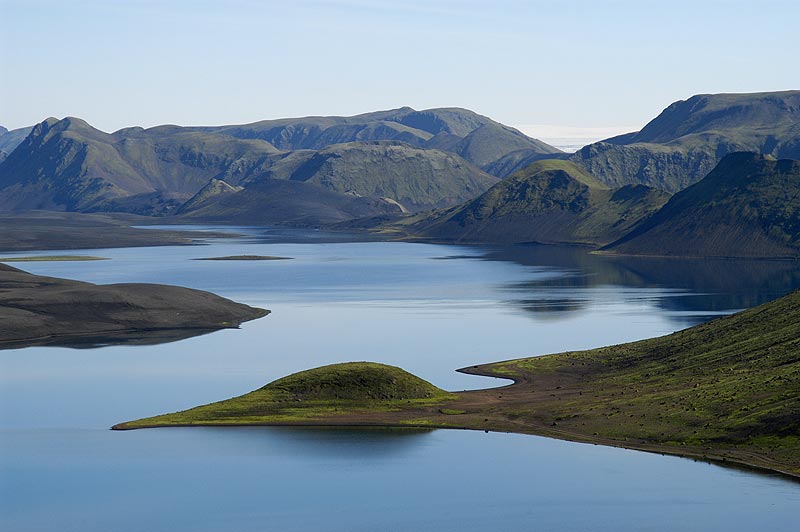
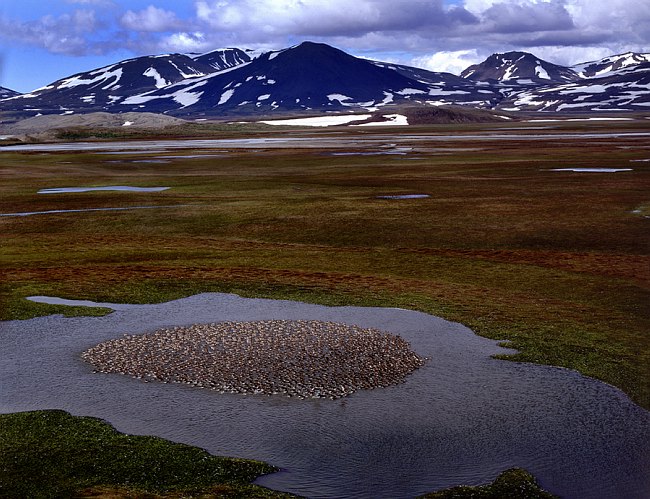
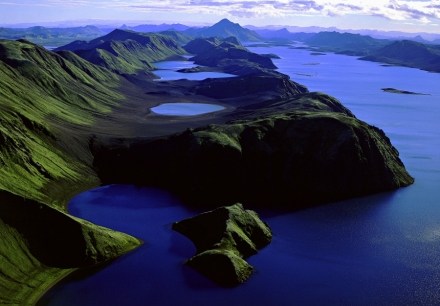
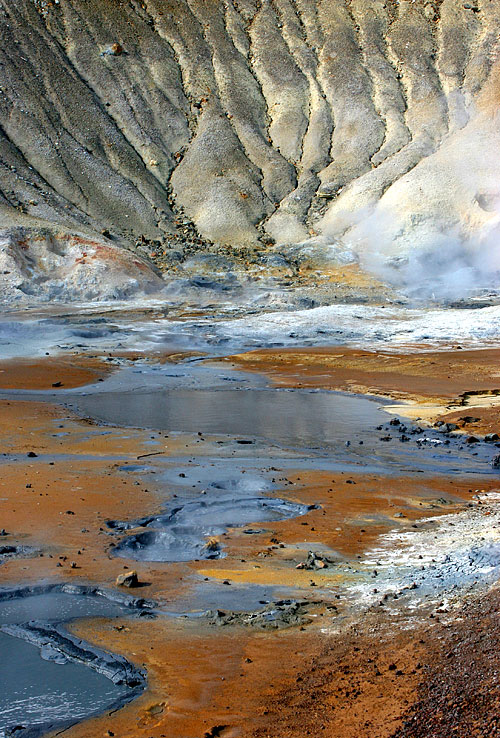
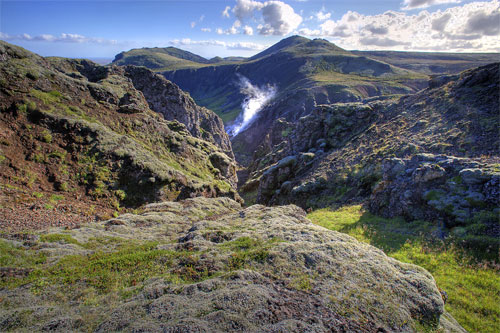
Works Cited:
Krater, Jaap. Hydropower Disaster for Global Warming. Trouw Newspaper, Netherlands. 21 January 2007.
http://www.savingiceland.org/node/669
Del Giudice, Marguerite. Power Struggle. National Geographic Magazine, March 2008.
http://www.savingiceland.org/node/1156
Íslandsbanki, n.d. The Icelandic Economy. World History Archives.
http://www.hartford-hwp.com/archives/61/266.html
Send message to Swarthmore College Environmental Studies
last updated 4/23/08